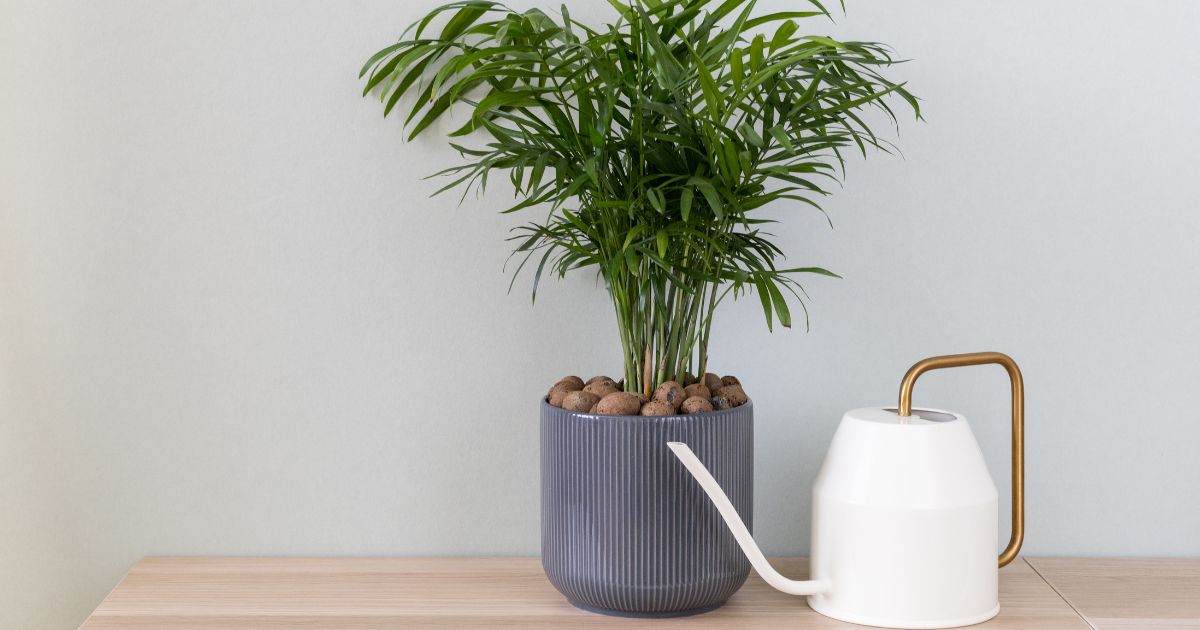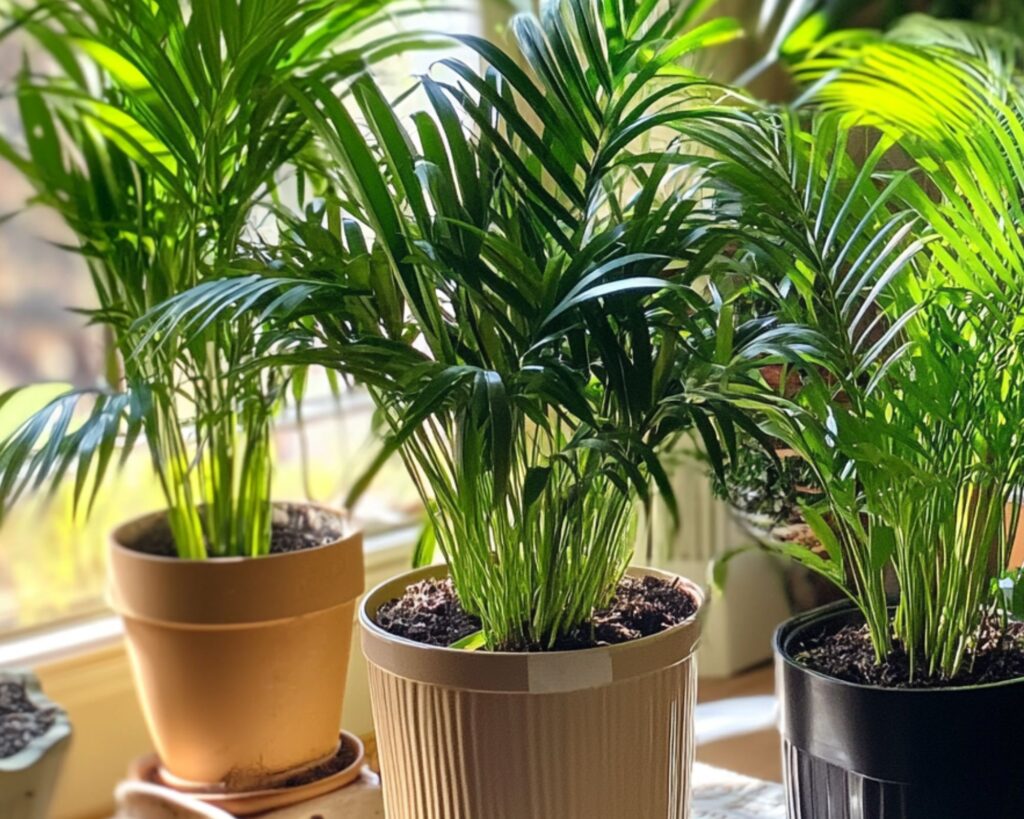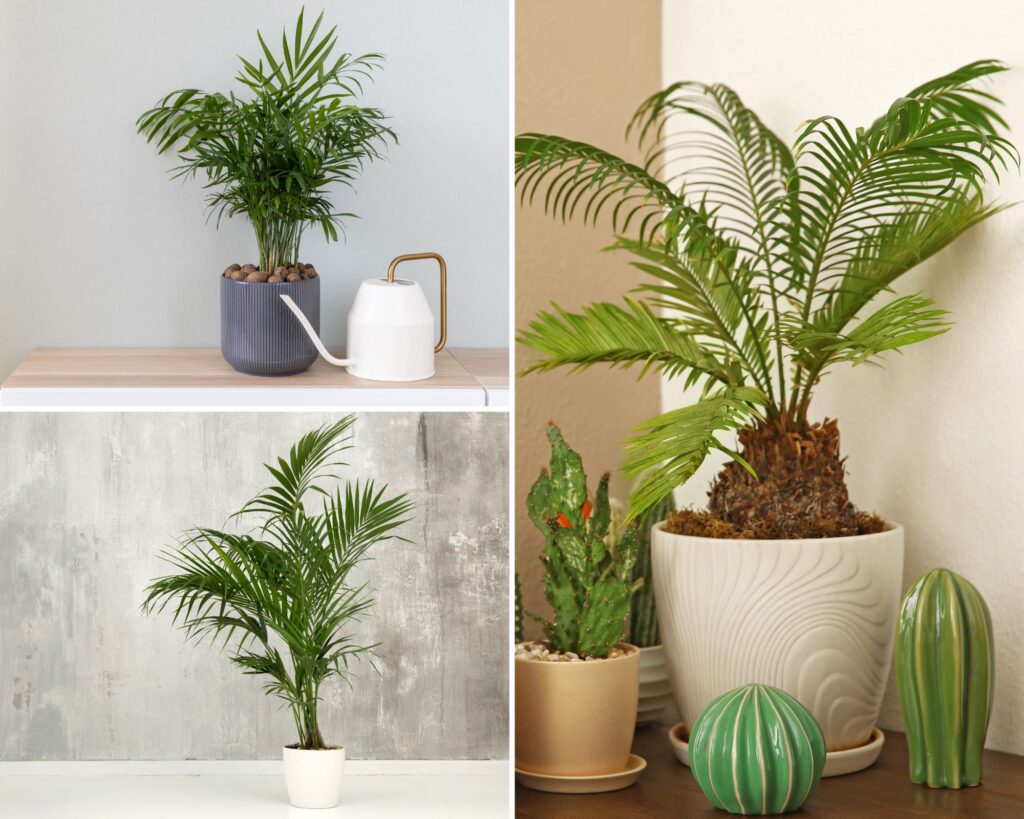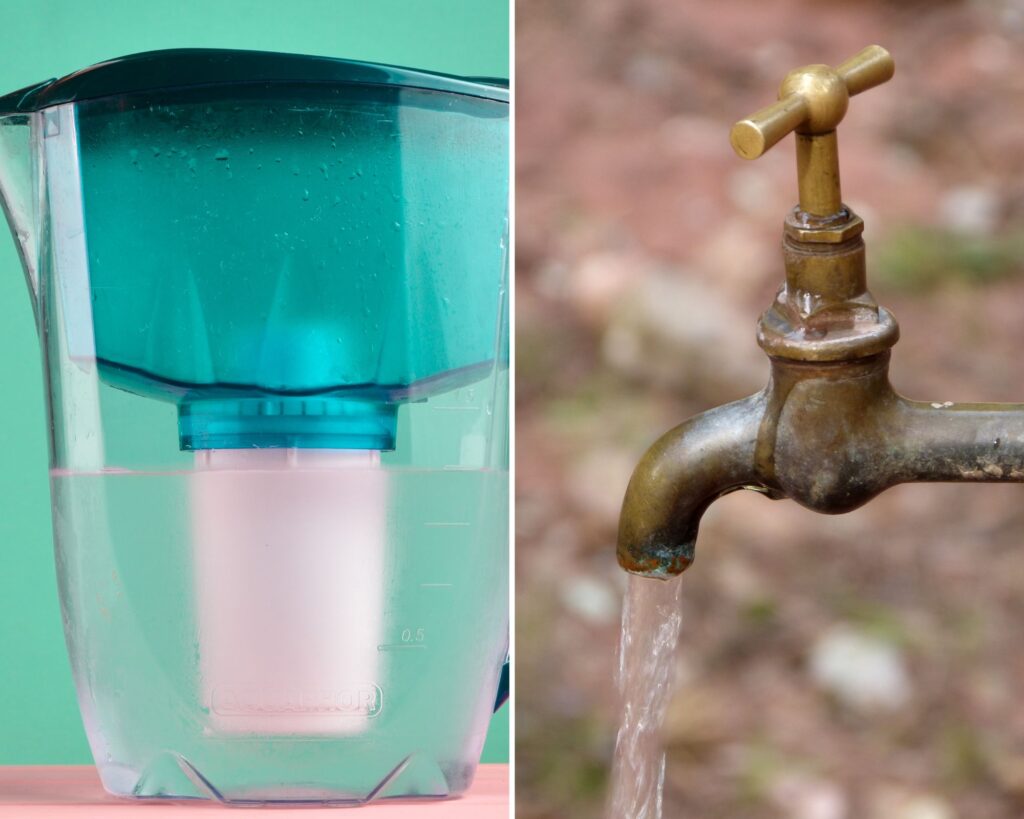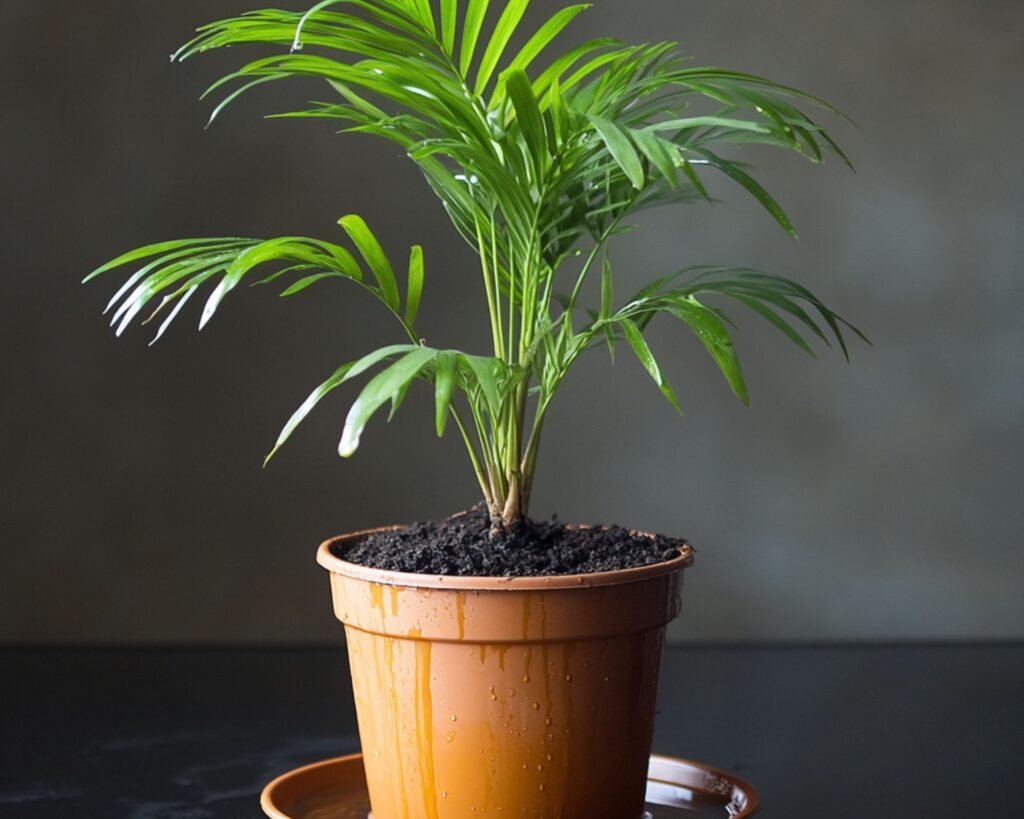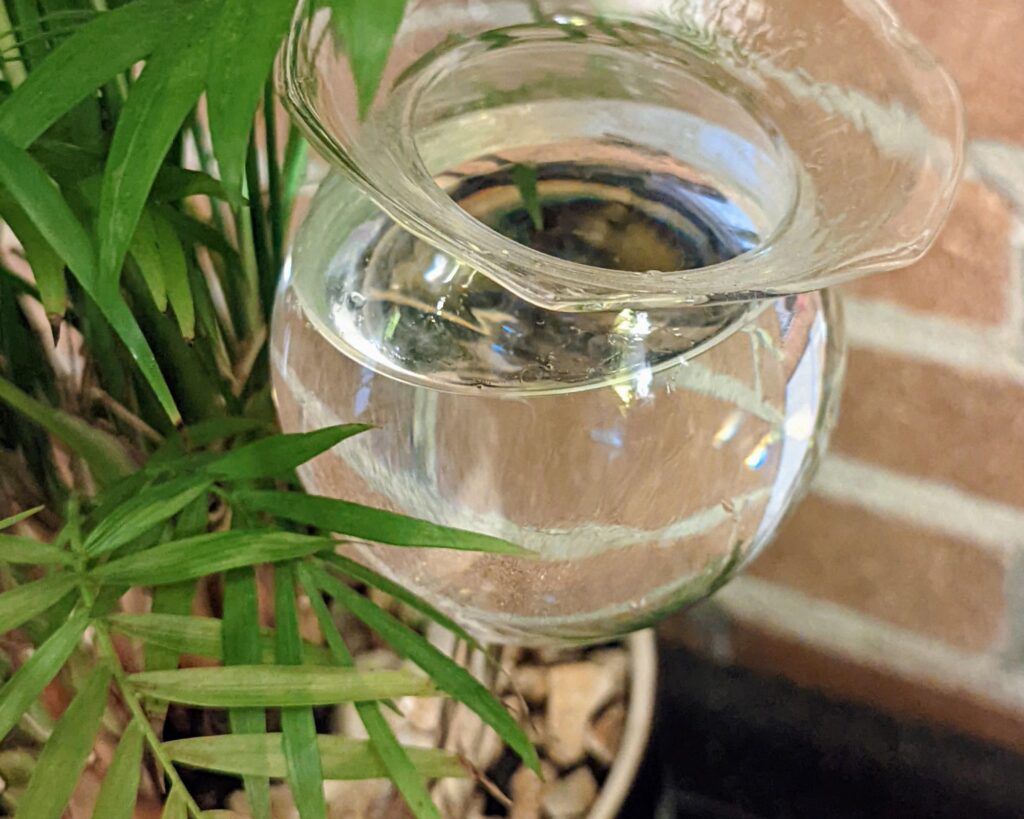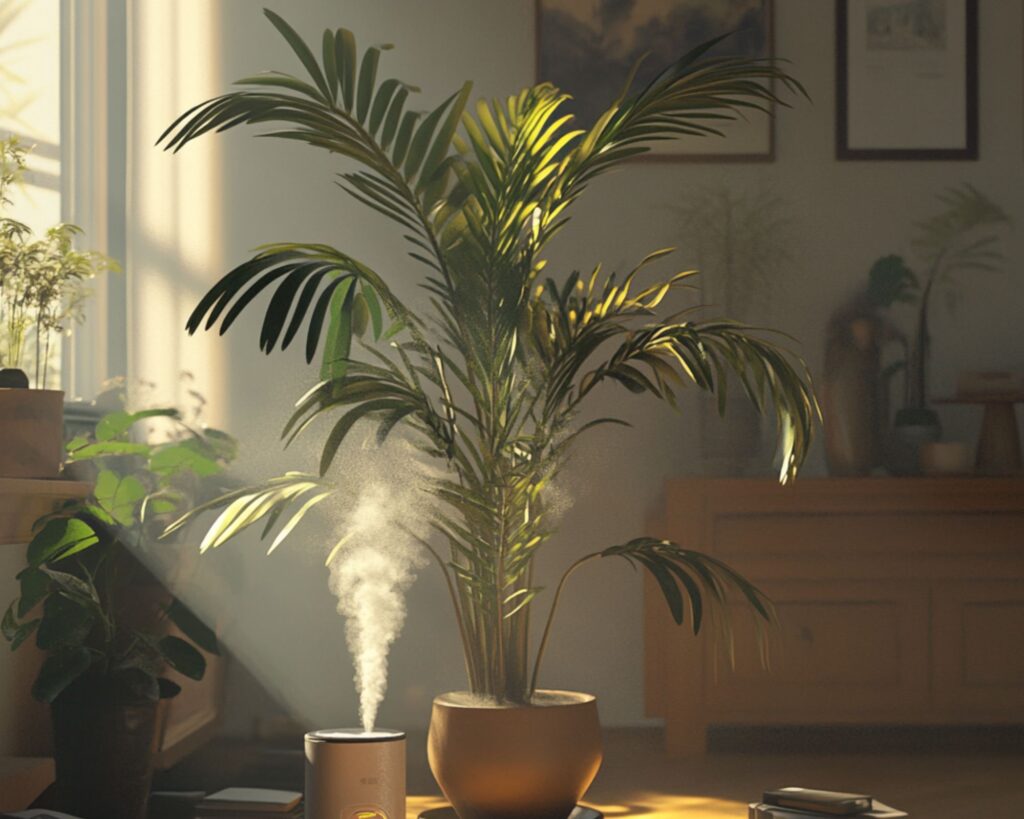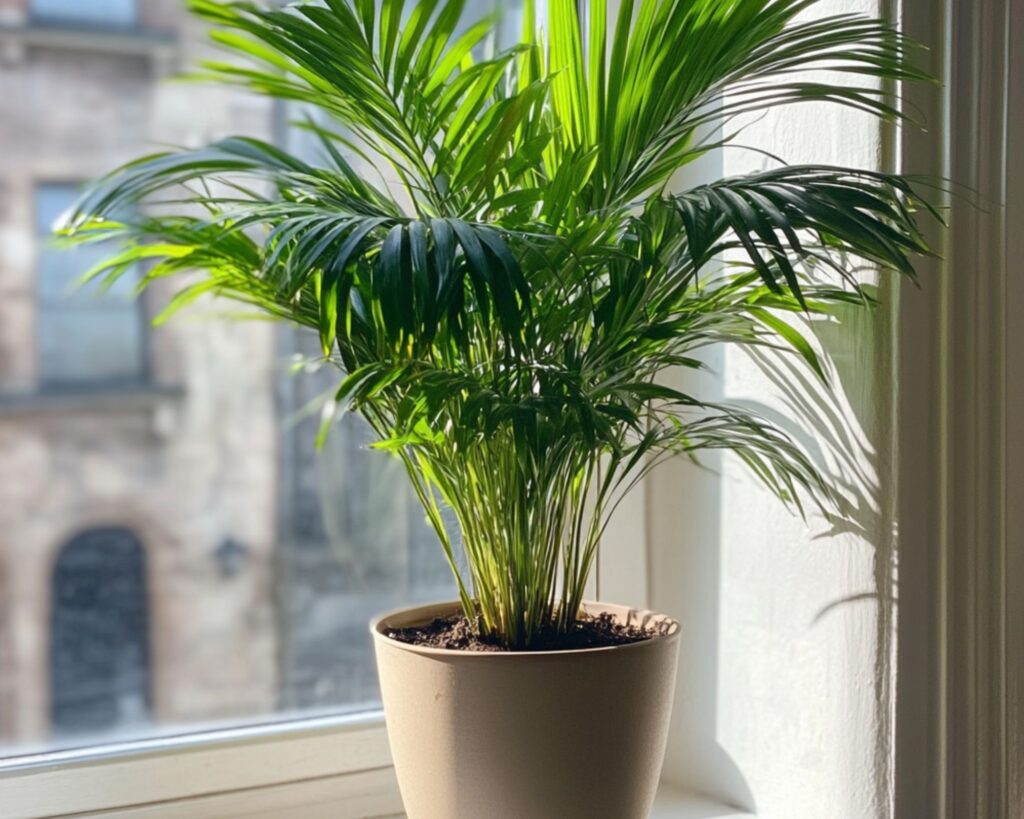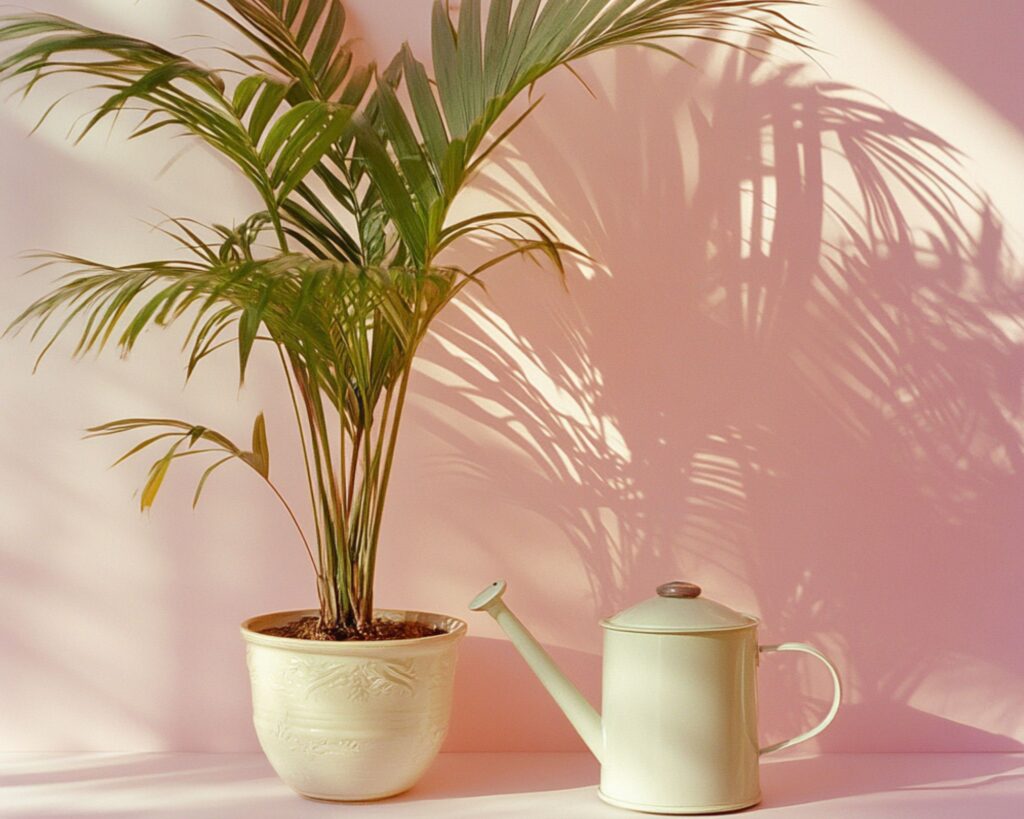Are your indoor palms looking less like a tropical paradise and more like a wilted mess? You’re not alone – keeping indoor palms lush and vibrant can be a real challenge.
These stunning plants can transform any room, but their watering needs can often feel like a mystery. Knowing the right time and amount to water is the secret to healthy, thriving palms and avoiding dreaded issues like root rot.
But here’s the good news: mastering indoor palm care isn’t as complicated as it seems. Start by understanding your palm’s environment – lighting, humidity, and temperature all play a crucial role in its water needs.
By adjusting your watering habits to suit these conditions, you’ll be well on your way to having an eye-catching, vibrant palm that brightens your home year-round.
Ready to dive into the ultimate watering guide for your indoor palm? Let’s get started!
Understanding Your Indoor Palm’s Needs
Caring for your indoor palm involves knowing its specific water requirements and recognizing signs of overwatering or underwatering. Each species has unique needs, and your plant’s health depends on meeting them.
Species-Specific Water Requirements
Different types of indoor palms have distinct water needs. Parlor palms and Kentia palms, for instance, thrive in consistently moist soil. On the other hand, Sago palms prefer their soil to dry out slightly between waterings.
To determine the right watering schedule, consider the palm’s natural environment. A rainforest-origin palm will need more water compared to desert-dwelling varieties. Use a moisture meter to monitor the soil to prevent over- or under-watering.
Be mindful of seasonal changes. Typically, indoor palms require less water in cooler months when growth slows down.
Signs of Overwatering and Underwatering
Watch for changes in your palm’s appearance that indicate watering issues. Overwatering can lead to root rot, signaled by yellowing leaves or a musty soil smell.
If your palm is underwatered, it may develop brown leaf tips and dry, crispy foliage. Feel the soil; if it’s wet for too long or too dry frequently, adjustments are needed.
Employ a consistent routine, adapting based on the palm’s needs and environmental factors. This proactive approach will keep your indoor palm vibrant and thriving.
Essentials of Water Quality
Water quality is vital for the healthy growth of your indoor palm. Key considerations include the pH levels and the mineral content of the water you use. The choice between filtered and tap water also impacts palm health.
pH Levels and Mineral Content
The ideal pH level for watering your palm is between 6.0 and 7.5. Testing your water’s pH can help you adjust it if necessary. Using a pH meter or litmus paper is a simple way to keep tabs on this.
High mineral content, like calcium or magnesium, can lead to salt buildup in the soil, which palms dislike. Hard water often contains these minerals, so consider testing for water hardness too.
Softening the water or employing distilled water can prevent mineral-related issues.
Filtered vs. Tap Water
Filtered water can be a better option for your palm because it removes impurities that can harm plant growth.
Various filters, such as carbon or reverse osmosis filters, are good options. They effectively remove chlorine, heavy metals, and other contaminants.
Tap water may contain chlorine or fluoride, which are not optimal for palms. Though letting tap water sit for 24 hours before use can help in reducing chlorine content, remember that this method won’t remove other chemicals.
Consider testing your tap water if you choose this option.
Watering Techniques and Tools
When it comes to caring for your indoor palm, using the right watering techniques and tools is essential. You’ll want to ensure the plant receives adequate moisture without risking root rot. Explore different methods and tools to ensure your palm thrives.
The Soak-and-Drain Method
The soak-and-drain method is a popular choice for watering indoor palms because it helps prevent overwatering. To begin, wait until the top inch of soil feels dry.
Next, fill a watering can with lukewarm water. Slowly pour it over the soil until water escapes the drainage holes. This ensures roots are well-hydrated without sitting in excess water.
Allow the plant to drain completely. If you can, place a saucer under the pot to catch the drained water. Empty the saucer after a few minutes to avoid stagnant water at the bottom.
Using this method once a week generally works well. However, always adjust based on the palm’s environmental conditions and specific needs.
Using Watering Globes and Spikes
Watering globes and spikes are handy tools for ensuring your palm receives consistent moisture. These tools deliver water gradually, which can reduce the risk of overwatering.
To use, fill the globe or spike with water and insert it into the soil. The water will slowly seep into the soil, providing ongoing hydration. This is especially useful if you travel frequently or forget to water regularly.
Opt for products that are appropriate for the size of your plant. Larger palms might require multiple globes or spikes. Consistent use ensures your palm maintains healthy moisture levels, even during dry spells or vacations.
Creating an Ideal Environment
To nurture healthy indoor palms, maintaining suitable humidity and temperature levels is crucial. Light supply and moisture availability also play key roles. Providing the right conditions mimics the palm’s natural habitat, fostering growth and reducing stress.
Humidity and Moisture
Indoor palms thrive in humid environments. Low humidity can cause leaf tips to brown and dry out. Use a humidifier or mist the leaves regularly with water to increase moisture.
Placing a tray of water near the plant can also help to maintain humidity levels. Choose a free-draining potting mix to prevent waterlogged roots, which can lead to root rot.
Water your palm when the top inch of the soil feels dry. Overwatering may cause yellowing leaves, so balance is key.
Temperature and Light Impact
Palms prefer temperatures between 65°F and 80°F. Avoid placing them near drafts, heaters, or air conditioning vents, as fluctuations can stress the plant. Light is crucial, so position your palm in indirect or filtered sunlight.
Direct sunlight can scorch the leaves, whereas too little light can hinder growth. If natural light is insufficient, consider using grow lights to supplement.
Rotate your plant occasionally to ensure even light exposure, as this helps maintain a balanced shape and encourages uniform growth.
Routine Care and Maintenance
Keeping your indoor palm healthy involves a consistent watering routine and adjusting your methods with the changing seasons. This ensures your plant thrives in various environmental conditions.
Regular Watering Schedule
Palms prefer a consistent watering schedule to keep the soil evenly moist. You should water when the top inch of soil feels dry to the touch. Depending on the palm species, this usually means watering every 7-14 days.
Tip: Use room-temperature water to avoid shocking the roots. Make sure your pot has drainage holes to prevent waterlogging, which can lead to root rot.
It’s helpful to establish a pattern by watering at the same time every week according to your palm’s preference.
Adjusting Watering with Seasons
Your palm’s water needs will change with the seasons. In spring and summer, when growth is more vigorous, you might need to water more frequently.
During autumn and winter, reduce the amount of water as growth slows.
Checklist:
- Summer: Check soil moisture twice a week.
- Winter: Reduce watering, allowing soil to dry out slightly more between waterings.
In colder months, ensure your palm is away from drafts and heated areas to prevent quick drying. Adjust your approach depending on how much natural sunlight your plant receives, as this can affect soil dryness.
Caring for your indoor palm requires attention to its specific watering needs, the environment, and seasonal changes.
By monitoring soil moisture, choosing the right water quality, and employing suitable watering techniques, you can create a nurturing habitat that supports vibrant growth.
Adjusting your routine as the seasons change and understanding your palm’s unique characteristics will keep it healthy and thriving year-round.
With mindful care, your indoor palm will bring a lush, tropical touch to your home.
